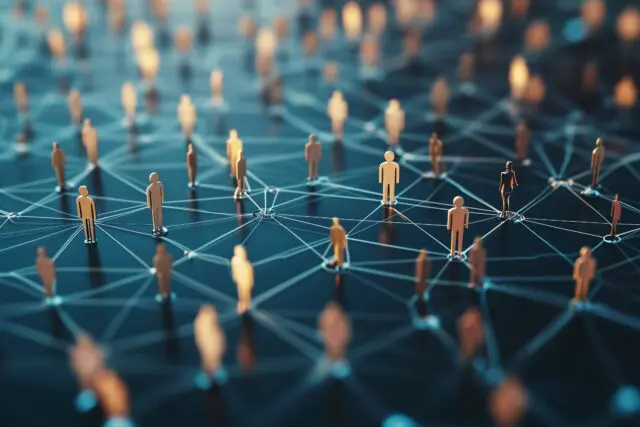
Culture and Health Wellness
June 23, 2020
Recognizing systemic discrimination at work (Part One)

Whatever your sector of activity, to be efficient, and to offer you the best ideas, your team must reflect the society in which we live.
Systemic discrimination still permeates all spheres of society, and particularly the world of work. Do you understand it? Do you recognize her? What are the insidious signs of discrimination in your ecosystem?
-
Stereotypes and unconscious biases
Unconscious bias isan acquired belief, the result of which are thoughts or actions that disadvantage or exclude an individual from a group. These clichés are particularly harmful.
Ask yourself the following questions to guide your thinking:
- Is your job posting network diverse enough?
- In your job postings, do you use terms with masculine connotations exclusively?
- Are you requiring qualifications or skills that are superfluous to those necessary, in order to reduce the pool of applicants?
- Are you overlooking an application because the name is not easy to pronounce?
- Are you fair and equitable in the scheduling flexibility you grant?
- Are promotions awarded to the most available employees, or to the most competent?
- Are terms like “them” and “us” used in discussions?
- Do you intervene when humor gives way to questionable jokes?
- Do you hear compliments tinged with ethnocentrism, like “Your French is excellent for a Hispanic”?
If you recognize yourself in these questions, you need to make changes soon, or ask for help to do so.
-
Increased performance monitoring
Racialized individuals report that differences of opinion, or not getting along with a colleague, can take on a dramatic dimension.Field studiesreport that visible minorities are subject to more increased monitoring than their non-racialized colleagues. This monitoring implies that their work is not good enough, which feeds imposter syndrome,overrepresented phenomenonamong minority people.
-
The unfailing glass ceiling
Studies reportthat with equal skills and diplomas, racialized people do not have access to the same jobs, promotions, salaries, particularly among women. When opportunities finally present themselves, we see thattheir authority is frequently questioned.
Thus, no one has a valid reason not to do their introspective exercise regarding their behaviors, values and communication habits. Added to this is a real examination of the management of diversity in the exercise of functions.
Dansthe second part of our file, we will return to corporate social responsibility with regard to systemic discrimination, and we will provide you with ideas and an example of a concrete action plan so that your company moves from a performative approach (the tip of the Iceberg) to a transformative approach(the submerged part of the Iceberg).

Noellie Dias, CPHR
Organizational Development Consultant,
Human Resources Specialist
Advice Centre
Discover more inspiring content
Find out how our methodology has transformed companies from different sectors. Each article is proof of our expertise.

Culture and Health Wellness
Combining Performance and Well-being: are you ready?
Performance appraisal raises concerns. Innovative practices linking performance and well-being are emerging to respond to this.

Culture and Health Wellness, Performance Management
Return to work: Managing employee requests
Returning to work is a delicate subject as businesses reopen. It is important to consider employee concerns and ensure a safe work environment.

Culture and Health Wellness
Return to work: what about mental health, have you talked about it?
The economic recovery allows the resumption of activities, with significant emotional impacts. Welcoming employees in this context is essential.

Employee Coaching & Training, Organizational Structure
PACME: How do I choose my training?
Need pacme training? Take stock of your needs to choose between training, facilitation and professional coaching. Contact us!

Organizational Structure
#COVID19: How did our consultants experience the crisis?
In troubled times, our consultants have proven themselves indispensable to our clients. They supported the firm and its staffing.

Organizational Structure
Economic recovery: The 4 stages of your recovery plan
Businesses must prepare for crises. Create a recovery plan for the sustainability of the company and its staff.

Organizational Structure
#COVID19: 10 commandments for crisis management
The time of crisis is the perfect opportunity to strengthen your business through team building and proactive management actions.

Employee Coaching & Training, Organizational Structure
Coaching as a vector of performance
Médina Cayer, certified NLP coach, is a reference in professional coaching in Montreal. His expertise helps managers optimize their performance.

Recruitment & Employer Brand
Should I onboard a new employee during confinement or wait until recovery?
Welcoming the new employee is crucial. Even in confinement, preparation, communication and virtual integration are essential.

Culture and Health Wellness
8 tips to ensure the Health and Safety of your employees at home
The suspension of the Quebec economy has led to a rise in teleworking. The health and safety of employees must be a priority. Conference suggested.

Organizational Structure
Do you let stress out in conversations?
The state of emergency is forcing businesses to review their operations. The stress of working from home can affect communication, but solutions exist.

Organizational Structure
The continuity plan
An expert in personal and professional development, the coach helps individuals overcome their obstacles and reach their full potential.